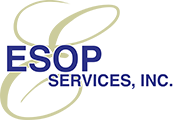The ESOP 1042 “Tax-Free” Rollover
Tax Savings Can Exceed 30%
Section 1042 of the Internal Revenue Code allows owners to sell their company stock to an ESOP and, if all requirements are met, defer federal (and often state) tax on the transaction at death the deferral becomes permanent. The IRC 1042 election is as valuable as it has ever been.
Capital Gains Rates
The federal capital gains rate is 20% on income over defined thresholds. The 3.8% Medicare surtax on net investment income for taxpayers with AGI over defined thresholds additionally applies to create a combined effective federal capital gains tax rate of 23.8% for many high-income tax payers.
This analysis makes a simplifying assumption that the state capital gains or income tax is not deductible for federal income tax purposes because of the phase out for high-income individuals. Even if state taxes are deductible, the benefit of this deduction may be offset in part or in full by alternative minimum taxes for many high-income individuals. It also assumes that the state tax can be deferred, along with the federal capital gains tax, and that the seller is taxed at the maximum capital gains rates.
1. The Seller must:
a. Qualify for long-term capital gains treatment for the transaction
b. Have at least a 3-year holding period in the stock
c. Be an individual, partnership, LLC, trust, or S corporation, but not a C corporation
d. Reinvest the proceeds in Qualified Replacement Property (QRP) within 12 months after the ESOP stock purchase (or during the 3-month period preceding the ESOP stock purchase)
2. The Company sponsoring the ESOP must:
a. Be a C corporation at the time the ESOP acquires stock (S corporations and LLC’s can convert)
b. Not have publicly traded securities
3. The ESOP must:
a. Own at least 30% of the company’s stock immediately following the ESOP’s purchase
b. Hold the stock for at least 3 years following the purchase. Otherwise the company incurs 10% excise tax on the proceeds from the disposition of the ESOP stock (with some exceptions)
4. QRP
a. Includes stocks or bonds of domestic operating corporations with less than 25% passive income
b. Excludes foreign or passive investments, such as mutual funds, certificates of deposits, securities issued by foreign corporations, securities issued by a government or agency, such as treasury bonds or municipal bonds
c. Floating Rate Notes (FRN’s) that qualify as QRP are frequently purchased due to their superior stability and put provisions for the holder
5. Additional Rules
a. Section 83 stock (stock acquired by an individual in connection with the performance of services or under employee stock option programs) does not qualify
b. The seller, certain family members, and 25% or greater shareholders may be excluded from the ESOP
6. QRP held until death receives a “stepped up” basis under current tax law
a. The deferred tax liability is extinguished at death
b. QRP can be leveraged, or “monetized” up to 90%, during the owners’ lifetime.
For qualified shareholders selling to an ESOP, the tax savings can range from 23.5% to greater then 30%.
This information should not be considered legal, investment or tax advice. Shareholders considering the “tax-free” rollover should consult with an experienced ESOP investment specialist, and legal and tax advisors.
